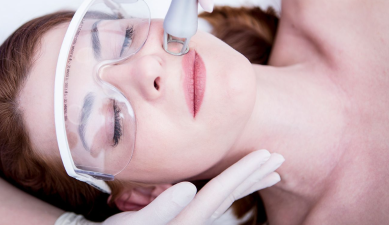As you probably know, laser hair removal treatments have numerous benefits. Almost anyone can get this procedure because of its accessibility and effectiveness. While it doesn’t typically yield permanent hair removal results, it can significantly shorten your beauty and hygiene routine.
As you probably know, laser hair removal treatments have numerous benefits. Almost anyone can get this procedure because of its accessibility and effectiveness. While it doesn’t typically yield permanent hair removal results, it can significantly shorten your beauty and hygiene routine.
Currently, the most effective hair removal method is laser hair removal. Ice-point hair removal is the most advanced permanent laser hair removal method. Based on the principle of selective photothermal action and the ice-point semiconductor laser hair removal instrument, the laser penetrates the surface of the skin to keep the hair follicles at a certain temperature, gently inactivates the hair follicles and surrounding stem cells, and achieves the purpose of permanent hair removal. Specific steps:
- Spot test: understand the specific conditions of the skin and hair to formulate a specific plan;
- Hair treatment: disinfection, cleaning, removal of sweat hair, uniform skin temperature;
- Optical hair removal: cooling protection to start hair removal;
- Skin care: sunscreen, moisturizing care, daily repair.
What do you need to pay attention to before laser hair removal?
- Do not remove hair by yourself two weeks before laser hair removal, including traditional scrapers, electric epilators, home photoelectric epilators, depilatory creams (creams), wax hair removal, etc. Otherwise, it will irritate the skin, thus affecting the effect of laser hair removal and increasing the possibility of folliculitis.
- Do not do laser hair removal if the skin is red, swollen, itchy or damaged.
- Do not expose the skin to the sun two weeks before laser hair removal, because laser treatment of exposed skin is likely to cause burns, causing redness and blistering of the skin, and even scabs and scars, with disastrous consequences.
- Contraindications
- Photosensitivity
- Those who have recently taken photosensitivity foods and drugs (such as celery, isotretinoin, etc.)
- Patients with pacemakers or defibrillators
- Patients with damaged skin at the treatment site
- Pregnant women, people with diabetes, heart disease, and hypertension
- Skin cancer patients
- Fragile skin that has been exposed to the sun recently
- Pregnant or pregnant women
- Those with allergies or scar constitutions; those with a history of keloids; (Note: There are not so many scar constitutions in the world, so don't be too suspicious.)
- Those who are taking vasodilators and anti-arthralgia drugs; and those who have recently taken photosensitivity foods and drugs (such as celery, isotretinoin, etc.)
- Those with skin infections such as hepatitis and syphilis
- Those with blood diseases and coagulation disorders
The precautions after laser hair removal are as follows:
- Do not take a hot bath within 6 hours after laser hair removal, because the working principle of laser hair removal is that the melanin in the hair follicles absorbs the heat of the laser, which gently destroys the hair follicles and prevents hair from growing;
- Some hair follicles are edematous, which is normal and can be relieved by local ice compresses. It will gradually get better after about 1-2 hours. Some people will have redness, which is also normal and can be relieved by ice compresses.
- Strengthen moisturizing 24 hours after laser hair removal. You can choose moisturizing products with strong moisturizing properties, low allergenicity, not too oily, and avoid moisturizing products containing essential oil ingredients.
- Avoid drinking alcohol within one week of laser hair removal, and do not go to high-temperature places, such as saunas, sweat steaming, and hot springs.
- Eat more foods rich in vitamin C to improve immunity and reduce pigment production. Eat less photosensitive foods, such as leeks, celery, soy sauce, papaya, etc.
- If redness and swelling occur, try to lower the temperature of the epidermis. You can use cold spray, ice compress, etc.
- Do not apply any functional or hormone-containing products during treatment
Conclusion
Preparing for your first laser hair removal session doesn’t have to be overwhelming. By following this guide, you can approach your treatment with confidence and peace of mind. Remember, the key to a successful experience lies in choosing a qualified professional and adhering to pre- and post-care instructions.


